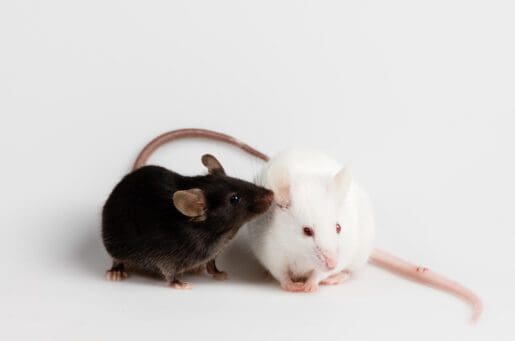Bioethics Forum Essay
So You’re a Scholar Who Wants to Make Things Happen
Because for about the last decade I have been a medical humanist working to change the way physicians treat people born with socially-challenging bodies, I’m frequently asked about doing activism from an academic base. Activism-curious academics typically ask about how one goes from thinking about critical change to actually effecting it.
Someday maybe just like we require graduate students to take methods class in disciplinary research, we’ll also require them to learn a little bit about effective teaching and outreach. But as we await that time, I’d like to share my top ten tips for doing activism from an academic base. I do not mean these to be substitutions for classic disciplinary scholarship, but rather methods for pushing that scholarship into the light of day. These are gathered from my own experience as well as conversations I’ve had from colleagues who have been out getting their hides tanned.
Before we get to my top ten tips, let me start with a little cautionary history for fellow and would-be activists. The collection of events now known as the Tuskegee Syphilis Study ran from 1932 to 1972 and was aimed at finding out what happened to black men with untreated syphilis. Although the first study in the series may have been scientifically legitimate for the time – there is some historical evidence that it may have been – the medical professionals running the Tuskegee Syphilis Study kept it going long after penicillin became known as an effective treatment for syphilis. Moreover, as time went on, the researchers worked hard to make sure the men in the study wouldn’t “accidentally” get penicillin. They intentionally misled the men, denying them the very name of their disease as much as denying them the cure. Tests like blood draws and spinal taps were represented as “treatments” in order to make the men enrolled in the study think they were really getting medical care, so the study could continue uninterrupted by actual care. (Allan Brandt’s article in the Hastings Center Report in 1978 is still the best analysis available of this work.)
Most people who have heard about the Tuskegee Syphilis Study subscribe to a myth that the researchers were bad, rogue doctors who secretly carried on the experiment out of pure racist hatred. In fact, the researchers regularly published their work in journals like Public Health Reports and the Journal of Chronic Disease. In other words, the researchers’ colleagues knew what was going on, and indeed approved the papers through peer review. Historical records show only one clinician ever raising an objection, in a private letter in 1965, to the persistent withholding of penicillin from the subjects. (The letter was filed without response, and the study didn’t end until a journalist exposed it to the general public in 1972.) And the researchers were not generally contemptuous of their black male subjects; indeed, one key member of the team was nurse Eunice Rivers, an African-American woman who aided in the deception and obfuscation and believed, against all reason, that she and the study were helping the subjects. The initial funding agency for what became a long-term study came from the Julius Rosenwald Fund, a liberal foundation that wanted to see the extension of good medical care to the usually neglected African-American population in the U.S. south. The Tuskegee Institute, a proud, African-American medical institution, participated in the study.
The truth is, the Tuskegee Syphilis Study wasn’t hidden, and it wasn’t carried out by bad, overtly racist people. It just went all wrong – it went on much too long, long after researchers needed to still be doing “basic” research on untreated syphilis. What kept it going? Racism, yes. But also institutional (academic) inertia, continued funding and publication opportunities, the assumption that good doctors and nurses and scholars couldn’t do bad things to patients, and a blind belief in the purity of “basic” research. And what Martha Solomon Watson has called “the rhetoric of dehumanization” within the study’s internals records and its published reports – that is, specialized language that made the researchers sound like passive tools of science, language that made the subjects sound like mere sites of disease, and language that “highlight[ed] a relatively minor difference (skin color) between groups of subjects as it obscure[d] their more numerous and significant resemblances” (see Tuskegee’s Truths: Rethinking the Tuskegee Syphilis Study.)
A few years ago, as I was simultaneously agitating for change among pediatric specialists and teaching the history of the Tuskegee Syphilis Study to pre-meds, I had an uncomfortable realization. A two-fold uncomfortable realization, actually. First, I understood as I hadn’t before how hard it was going to be to convince clinicians they were doing the wrong thing. They knew (as I knew) they were good people with good intentions. And there were plenty of academic institutional rewards stopping them from seeing what I was seeing.
Second, I understood as I had not before that, like the clinicians whose work I was critiquing, I was myself at risk for being a researcher in a Tuskegee study. That is to say, I had around me the same kinds of institutional blinders and carrots that drove the researchers of the Tuskegee study, and I had the same naïve idea that my good intentions would keep me from doing anything bad. This led to a productive pause, after which I started more aggressively finding out what I could about the effects of my work. So before I encourage others to tread (or continue to tread) the sort of path I have, I want to caution primarily not to get so caught up in the moral inertia of your cause that you fail to see where you might be doing harm. Reaching out of the ivory tower has serious rewards, but those rewards come with costs and risks.
If, after this caution, you still want to proceed to try activism from an academic base, here are my suggestions for how to do it effectively:
1. Realize that change happens primarily because of relationships. This is just a blatant historical fact, and it means that you cannot hope – as I once did – to publish a paper in a specialized journal and see the world change. A journal article allows you to think through your ideas, but if the publication is the end of it, the only relationships you’ve built are with your reviewers and readers. To make change happen, you have to build relationships with the people who can make that change happen. This typically means something of a long-term commitment to working with people you would not ordinarily work with under the idealized academic career. It means getting off email (a stilted form of dialogue that promotes debate over collaboration), at least picking up the phone, and preferably having a face-to-face with the people who have the power to do what you are dreaming of or dreading. I saw Erik Parens of The Hastings Center do this to great effect in the Surgically Shaping Children project, where bioethicists sat down with actual clinicians and people who grew up with socially-challenging bodies and parents of such people. We spent several years meeting regularly, really working to understand and make change. This has led to extremely productive collaborations between cleft palate specialists and intersex specialists interested in pushing for close attention to psycho-social well-being of patients, something that never would have happened without Erik’s work to bring us together.
2. Expand your notion of sources and experts. This means you ask the people who are implicated in your work what they think of it (preferably pre-publication, to maximize their insights), and you give up a naïve notion of the distinction between primary and secondary sources. Very often the people you’re treating as subjects are in fact experts. This truth may drive your IRB crazy; I found myself having to press my IRB on why intersex activists had to sign a consent form to tell me about their lives and learning, but surgeons didn’t. (I cynically asked, “Are doctors not human, or not subject?”) Regulation and outdated caste systems should not drive our thinking. I loved watching the radical work Len Fleck did using rational democratic dialogue to talk with the non-academic people of Lansing about the concept of genetic responsibility. To do this, Len went out of the university and to the local hospitals, a perfect symbol of meeting people on the real territory of life. It was enlightening to see how often our neighbors wanted to know why we academics weren’t doing more right now to make people safe from genetic discrimination.
3. Don’t try to guess who will be grateful for your work . . . but get it in writing when they are. Doing this provides important documentation that can be useful for employment, tenure, and promotion. It evidences that what you’ve done has had an impact, and it puts outreach on the cognitive maps of search committees and P&T committees. It has the added benefit of letting the letter-writers know you’re proud of working with them. If your potential letter-writer doesn’t know how a letter like that should sound, explain to her or him what kinds of things your chair or dean will appreciate knowing.
4. Keep your high standards of scholarship, but, at least when doing public work, don’t get bogged down in long treatises. Remember that most people cannot absorb exquisitely detailed analyses on the first pass. Figure out what matters the most, and work on conveying that concept first. Always back up your claims with your reasons and evidence, so that the value of good scholarship is embedded in your message. Often it works well to write several versions of the same kind of paper – one for people of the disciplines you want to reach, one for some kind of newsletter or website, another as a newspaper editorial. I’ve seen Howard Brody do this beautifully through in his regular column for the community newspaperLansing City Pulse. I’ve had non-academic neighbors tell me what they learned from Howard’s columns about helmet laws, health insurance, and evidence-based medicine without realizing I know him.
5. Keep a sense of humor. This can help your cause directly – by disarming people with laughter – and indirectly – by keeping your sense of balance intact. For the former, it often helps to use self-effacing humor that signals you’re human and you know they’re human. (Best not to use physical humor, as I have occasionally accidentally done by getting entangled with an overhead projector.)
6. Write like it matters and publish where it matters. In other words, write and publish like some non-academic’s life depends on it. If you’re trying to achieve a political goal (and what goal worth achieving isn’t at some level political?), consider studying powerful political discourse and using the techniques employed there. Some of the most influential public intellectuals have been real researchers who knew how to write well. Stephen Jay Gould was smart enough to write about the beauty of science in a way any intelligent high school student could understand and appreciate. Rachel Carson had the same power of prose. Imagine if both of them had left their work to the confines of academic journals.
7. Get media training early. If you want to change the great beast vaguely called “society,” you need the media. Many reporters and producers are smart, careful people. But some aren’t, and some suffer from dreadful editors. Media training can help you be prepared to get your message across and avoid being misrepresented. I’m still grateful for the university media trainer who told me “If you’re working with TV crews, assume the camera is always on, and never say anything that can be easily edited to twist your point.” This advice saved me from a potentially horrific experience with a TV news producer who was determined to get me to say “Doctors murder children” when they do sacrifice separations of conjoined twins. (I thus knew not even to say, “I don’t think doctors murder children when they do sacrifice surgeries,” since the start of my sentence could be cut out.) Good media trainers will help you understand how to prepare to talk with reporters, how to be effective on camera, and how to make your point compelling. (My own primary suggestion: Tell a story, and then use that story to make your point.)
8. Don’t make satisfaction of your ego the cause you’re fighting for. Take this advice from someone who once wasted an embarrassing amount of time and energy trying to prove she wrote down an obvious point first.
9. Recognize your mistakes, and forgive your detractors their mistakes. If you don’t do this, then you and the folks on the other sides of your issues will become entrenched and immobilized. Admit it when you’ve been wrong; you’d be surprised how quickly the other person meets you in the middle. I’ve discovered my presentations to intersex clinical teams work much better when I start by saying what I have been wrong about.
10. Good intentions are not enough; check regularly on your effects. Especially if you consider yourself a good liberal, think about the really scary lesson of Tuskegee while you rack up the bruises and rewards of your work.
While I want to encourage (even demand) more activism from bioethicists and other academics, I do not believe I am being anti-intellectual. There is no question in my mind about the value of intellectualism. I do think, however, that is time to have a more critical, spirited conversation about the social responsibility of the academic in today’s world. And after we have that conversation – or even while we have it – we should also get up and act. Something is actually happening. We should also make things happen ourselves.
– Alice Dreger











